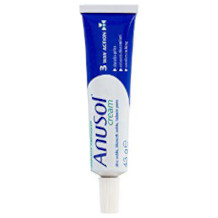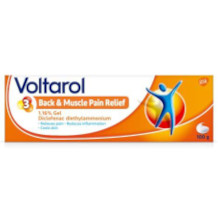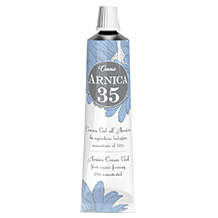Nebuliser purchasing advice: how to choose the right product
- What You Need to Know
- Inhalers are used to relieve the symptoms of colds and chronic respiratory diseases.
- They are suitable for diseases of the upper and lower respiratory tract.
- There is a suitable device for every age and purpose. Some models work with conventional water vapour, others spray fine mist.
- Modern devices allow easy application, so that the resulting steam or mist can be controlled at the touch of a button.
- Inhalers are available as tabletop and handheld models.
What makes an inhaler so valuable
As soon as the cold season knocks on the door, the nose runs, the throat itches and a persistent cough prevents deep, calm breathing. For all these signs of a cold, inhalers bring quick relief from the symptoms. Whether with a saline solution, pure water vapour or an additional, special medication – an improvement in the state of health is possible within a very short time through inhalation. Stuck mucus can be loosened, annoying coughing irritation decreases and the nose, bronchial tubes and lungs become free again.
The application is very simple with the modern, technically sophisticated devices and, thanks to the functional accessories, ideally suited for every individual requirement. For the selection of the right inhalation device, the necessary purpose of use should be considered first and foremost. The main distinguishing criteria are the age of the user, the type of device and the technology.
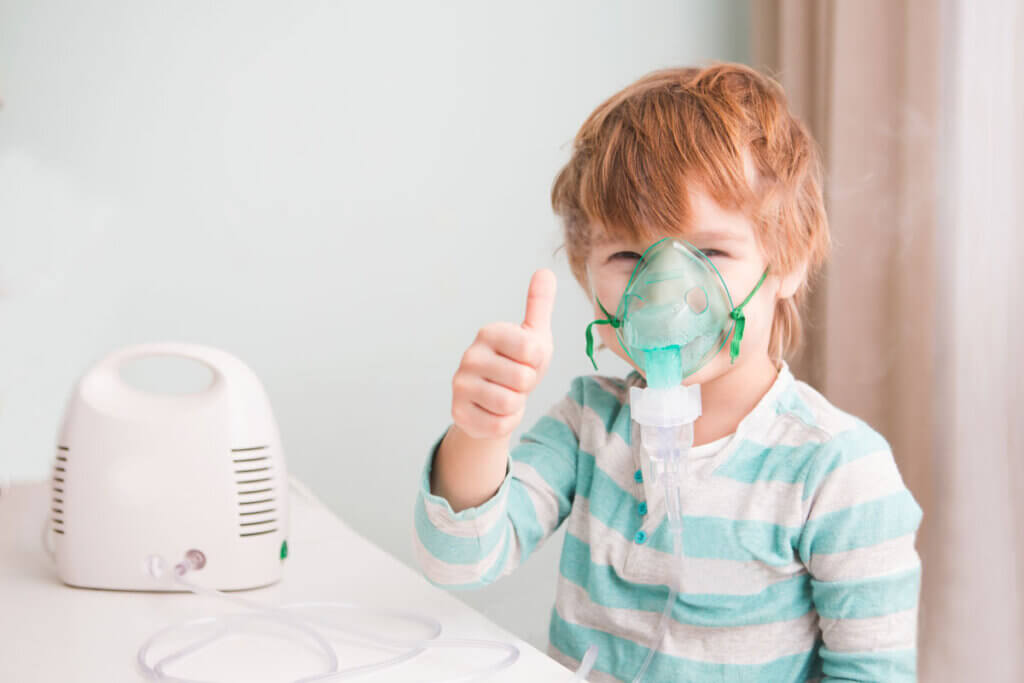
For which diseases is an inhaler used?
Inhalation devices are used to moisten and care for the respiratory tract in winter or in the case of an irritating cough. There are different types of respiratory diseases: For example, either only the upper or lower respiratory tract or both can be affected; there are also acute flu infections or chronic lung and respiratory diseases that can be treated with inhalers.
Upper respiratory diseases include:
- Cold and cough
- Sinusitis or sinusitis
- Pharyngitis or laryngitis
Lower respiratory diseases include:
- Bronchitis
- Chronic obstructive pulmonary disease
- Pneumonia
- Asthma
A short review
Just a few decades ago, inhaling involved all kinds of effort. Water had to be boiled, a large bowl and a towel had to be provided. With this method, it was not only difficult to find the right temperature, but the inhalation itself was not particularly pleasant: the entire face, the hair and sometimes the clothes got wet. In addition, the hot water posed the risk of scalding. It was also difficult to add necessary medicines or substrates. Of course, this kind of inhaling can still be done today – it is cheap and the utensils for it can usually be found in every household. But the electric inhalers are more practical and easier to use in all respects.
A touch of history
Some sources say that the so-called “inhalative therapy” goes back to ancient Egypt. As early as the 2nd century BC, the therapeutic use of aerosols of plant origin through smoke production is described. In the following millennia, the smoking and inhalation of herbal substances for ritual, religious or medicinal purposes can be traced in many cultures.
How do inhalers work?
Inhalers are medical devices that all work very similarly, regardless of the indication, i.e. the reason for inhalation: Depending on the model, the user inhales aerosols, medicines distributed in mist form, or water vapour. The basic substance is either a saline solution or pure water; pure water vapour is recommended especially for irritated coughs or dry heating air. In the case of more severe symptoms such as bronchitis, pneumonia or sinusitis and asthma, certain medicines, usually prescription-only, are added to the liquid. For this purpose, so-called nebuliser devices are usually used, in which the mixture of liquid and medication is nebulised. These vapours with the active substances from the added medicines or substrates thus reach the corresponding parts of the body such as the nose, bronchial tubes or lungs directly when inhaled.
What inhalers are there and how do they differ?
Inhalers differ first and foremost in the way they work: There are manual inhalers where you inhale pure water vapour. With electric models, the inhalation liquid is nebulised in a fine spray cloud. The models can be divided into two groups: Table-top devices, which are perfect for use at home, and hand-held devices, which are also good for use on the go. Table-top units are stable and are electrically powered by a compressor – which makes them very loud. In addition, you always need a power socket to operate these inhalers. The compact handheld devices, on the other hand, are much quieter. Since they are powered by a rechargeable battery, you do not need a power socket. In addition, they can be used flexibly. Electric devices are usually more expensive than manual inhalers; both models require regular cleaning. All inhalers are suitable for both children and adults.
Pro points
- Different purposes
- Suitable for children and adults
- Targeted and deep impact
- Handheld devices can be used on the move
Drawbacks
- High price for electric models
- Cleaning after use
Find the right model
If you want to buy an inhaler, the indication is primarily decisive. If you only want to treat your respiratory tract occasionally when you have a cold or during the winter heating season, you can use simpler models with a clear conscience. A person who suffers from a chronic respiratory disease or is even dependent on an inhalation device in an emergency, for example in the case of severe asthma, needs a device in which the medication can also have the best possible effect. The age of the user is also decisive: are they adults or should the device be usable for the whole family with children? The product range extends from simple, inexpensive models with prices of less than 100 euros to devices with modern technology that cost more than 100 euros.
Leading brands
Omron | Pari | Hylogy | Beurer | Medisana | Simbr
The different inhalation systems
There are various inhalers or inhalation systems, including nebulisers. They differ in their type and functional principle.
Nebuliser
In a nebuliser, air flows through an active substance solution and nebulises it into small droplets. The particles that come out of the solution are mixed with the air.
Ultrasonic nebuliser
With ultrasonic nebulisers, a vibrating piezo crystal is used to generate an ultrasound that ensures that droplets are released from the active substance solution in the form of a fine mist. The higher the frequency of the vibration, the finer the droplets. Since the particle size is approximately between 4.0 and 6.0 micrometres, the droplets only penetrate the large and medium-sized bronchi when inhaled, but not the small bronchi. With ultrasonic nebulisers, inhalation takes longer. In addition, the liquid heats up during inhalation, which is why they are not suitable for some medicines.
Membrane nebuliser
Membrane nebulisers correspond to the latest technology for nebulising liquids. In them, a very thin membrane with thousands of microscopic holes vibrates and creates the fine droplets that can penetrate into the small bronchial tubes. Through these vibrations, each micro-hole acts like a small pump, producing the fine droplets that form the mist. The drug particles are very small, about 2.5 to 5.0 micrometres, and therefore reach the small bronchial tubes. These devices work almost silently, are very compact and are usually powered by a rechargeable battery. This makes them very flexible to use. However, they are less robust than other models and should only be used with extreme caution.
Nozzle nebuliser
The nozzle nebulisers are among the most common models. The inhalation solution is finely atomised by the compressed air of an integrated compressor and passed on to the mouthpiece or mask through an air hose. Since the droplets produced vary in size, the larger ones are held back by a baffle plate. The nozzle inhaler breaks the liquid into microscopically small particles. The resulting fine mist with the added active substances, such as salts or medicines, can penetrate deep into the airways.
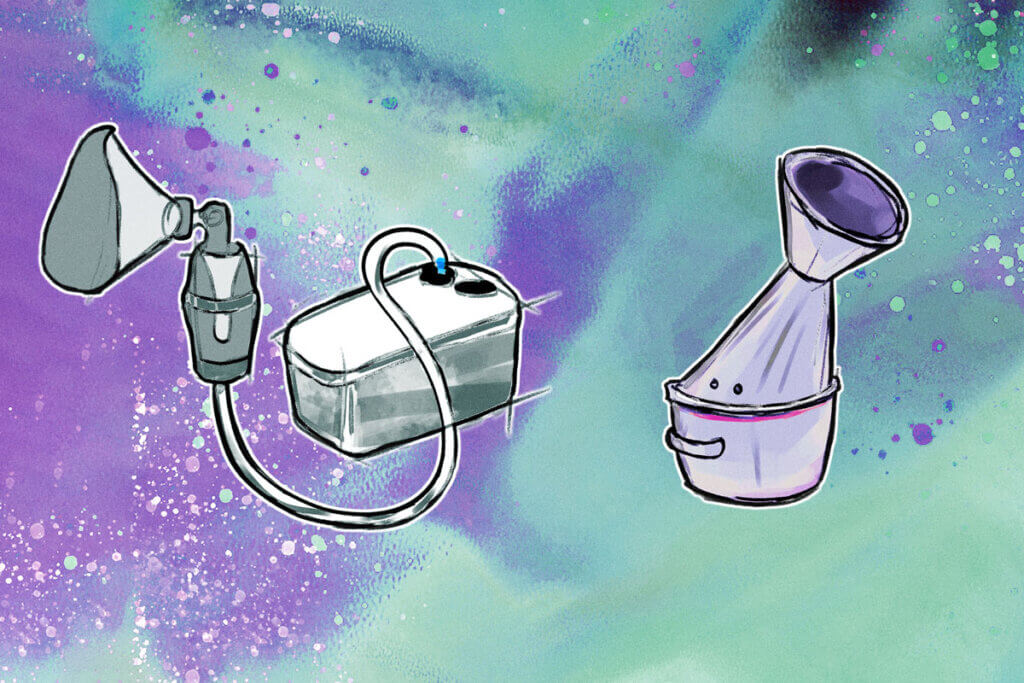
Other types of inhalers
In addition to the common nebuliser models, there are also other types of inhalers that work with compressed gas or steam.
Powder or pressurised gas metered dose inhalers
Metered dose inhalers or powder inhalers are used primarily for asthma diseases in adults. Metered dose inhalers deliver a specific amount of active ingredient by means of a gas at the push of a button, for example solutions with cortisone for inflammation of the airways. There are also sprays that contain an emergency medication and are mainly needed for acute asthma attacks. In addition, there are sprays to dilate the bronchial tubes. The application technique, i.e. the technique and coordination of spraying and inhalation, is sometimes difficult and requires practice. With powder inhalers, the active ingredient is released through the breath: The inhalant does not have to be inhaled by pressing a button, but with a strong breath into the lungs. They are therefore unsuitable for people with severely restricted respiratory flow.
Steam inhaler
Manual steam inhalers work with hot water vapour that you inhale through a mouth-nose attachment. Similar to inhaling over a bowl of hot water, water must also be heated and poured into the inhaler’s container. Electric steam inhalers also work with steam. Here, however, the water is heated by the device itself. You can add substances such as eucalyptus substrate to the water. Since the drops created by the hot water are relatively large, only the liquid parts penetrate the airways. For some indications, this type is therefore less suitable or not suitable at all. The inhalers are therefore rather used to moisten the mucous membranes or to relieve colds and mild coughs.
Attention, hot!
The steam inhaler must always stand or be held straight, otherwise hot water could leak out; this poses a risk of scalding. Especially when children are using the inhaler, be on the safe side: Use a device that is completely leak-proof and stay with your child while they inhale.
Note that with manual devices, many of the important active ingredients are lost as they remain in the water or container. Therefore, if you have to inhale with expensive additives or medicines, you should opt for nebuliser devices. Steam inhalers are therefore recommended above all for inhaling substances with oils or herbal pastes. Caution is always advised when adding essential fragrances to the inhalation fluid, as some substrates irritate the respiratory tract and mucous membranes. Children in particular are very sensitive and if used improperly, the substances can have the opposite effect and be harmful to health. But adults should also proceed with caution to avoid allergic reactions or irritations.
Electrical appliances predominate
In an electric device, the inhalation fluids can be “nebulised” much finer by means of compressors or ultrasound; therefore they reach the airways better. Inhalation with water vapour produces larger drops that partially reach only the upper airways. This is why they are not recommended for some acute and chronic diseases. Inhalation with nebulisers takes longer than with powder or pressurised gas metered dose inhalers. As no special breathing technique is required, the nebulisation method is especially suitable for children for whom the application technique of powder or pressurised gas metered dose inhalers might be difficult.
What else should be considered when buying an inhaler?
Of course, other criteria play a role when choosing an inhaler. When making a purchase decision, you should consider, for example, the filling volume, the duration of inhalation, the accessories and the suitability for children.
The inhalation time
The duration of an inhalation depends on the type of illness. For simple infections, a few minutes several times a day is usually enough. In the case of chronic dryness of the respiratory tract, it is advisable to inhale with water or table salt for a longer period of time to keep the respiratory tract moist. Ideally, discuss the duration of use with a doctor in advance.
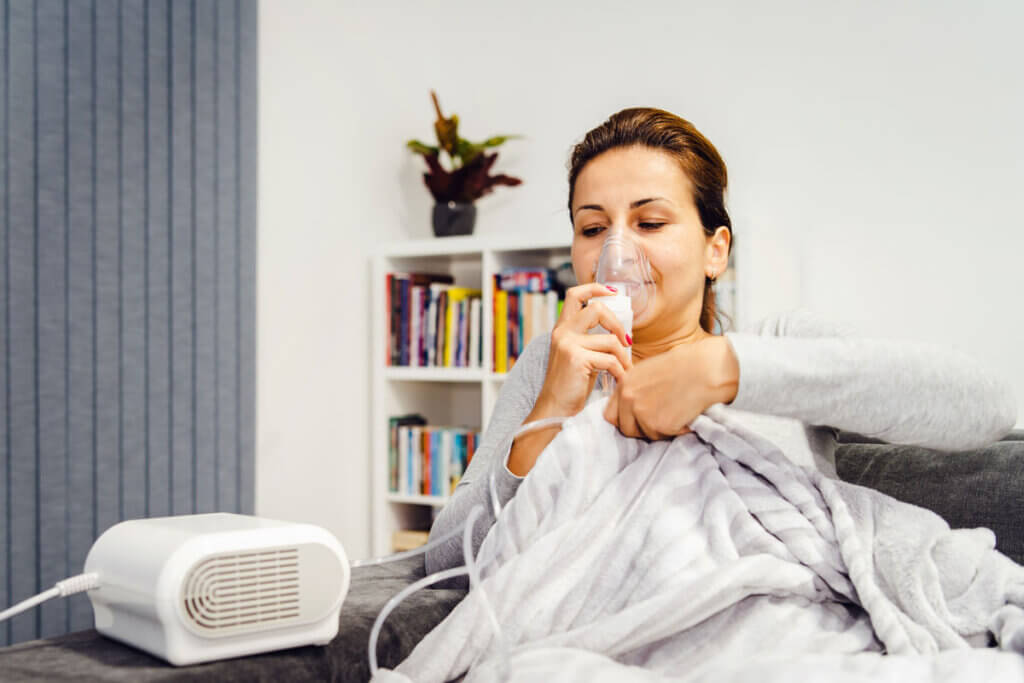
The nebulisation rate
The nebulisation rate indicates how much liquid the respective device emits within one minute. This value is measured in millilitres per minute and is usually between 0.2 and 0.6. The lower this value, the longer an inhalation process takes. Conversely, this means that a short inhalation time is achieved by a high nebulisation rate. This is mainly influenced by the technology of the device, because with an ultrasound device the nebulisation is comparatively fast, with a compressor device it takes longer.
The filling volume
The filling volume indicates how much inhalation solution fits into the device. The amount of liquid also influences the duration of inhalation. Many inhalers have a maximum filling volume of ten millilitres. Usually you have to fill in at least two millilitres so that enough vapour or mist is created and the dissolved substrate or medication can be distributed.
The additions
The use of the appropriate additives and medicines depends on the indication and type of illness that is to be treated by inhalation. In the case of a simple cold, inhalation can be carried out with water or table salt only, for example in the case of mild symptoms and for humidification. However, you can also add a special supplement, such as oils or herbal substances. For more serious illnesses, medicines are added – depending on the clinical picture.
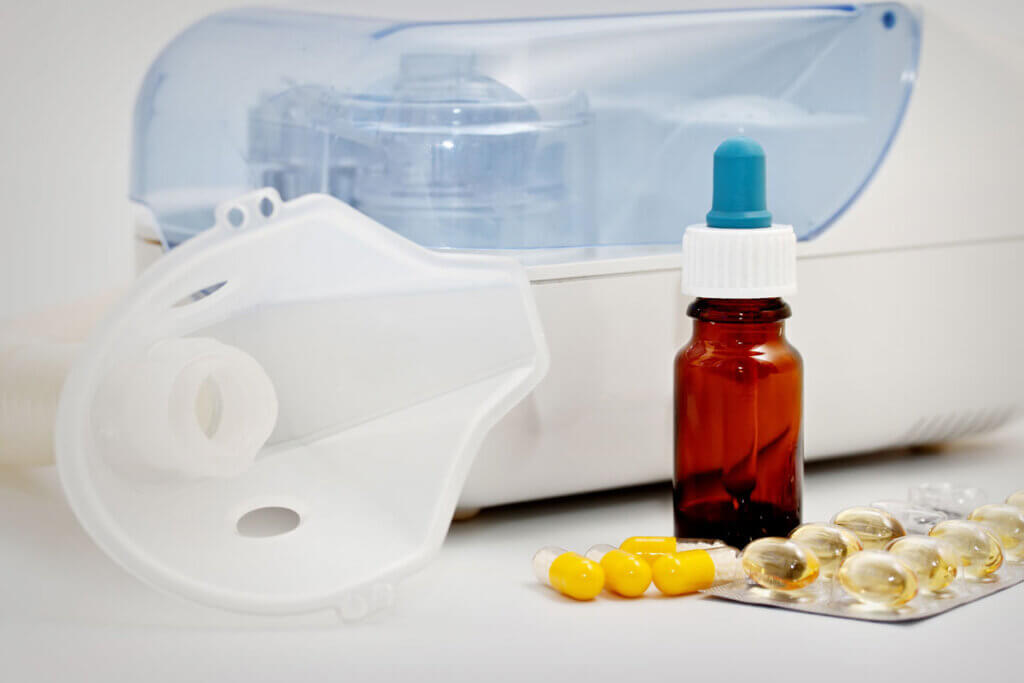
What attachments are available for inhalers?
The choice of the appropriate attachment depends primarily on the age of the user, but individual preferences also come into play. Adults usually use a mouthpiece that is placed between the lips. Depending on the symptoms, however, a mask is also recommended. For small children, inhalers must meet certain criteria. For example, children are very sensitive to noise. Therefore, compressor devices are rather unsuitable. Nebulisers based on oscillating membrane technology are the quietest. For small children, a mask attachment that covers both the mouth and the nose is best. Breathing with a mask is usually easier for children, and less inhalation solution is lost. Many inhalation devices come with a nose and mouthpiece or breathing mask.
How do I inhale correctly?
There is actually not much to do for proper inhalation: Prepare the device with the appropriate ingredients and make it ready for use. Then put on the face mask or breathe in and out deeply through the mouth and nose piece. In order to distribute the vapours as well as possible in the respiratory tract, you should inhale slowly and deeply; hold your breath briefly and then exhale again in a controlled manner. The calmer you breathe, the better the aerosols can distribute themselves and penetrate the airways. Depending on the clinical picture and indication, it is advisable to seek advice from your family doctor on the medication and dosage of the medication.
Manual inhalers offer the advantage that you can interrupt the process at any time if you have to cough or sneeze. This way, none of the inhalation fluid with possibly expensive medication is lost. Some devices are equipped with an automatic shut-off that stops on its own in these cases. Still other models have interval nebulisation; here, the aerosols are only released when inhaled. This prevents loss of active ingredients, but the inhalation time is longer.
Allergy sufferers, beware!
Allergy sufferers should be careful when choosing additives, as these can trigger or intensify allergic reactions. If you or your child show the slightest allergic reactions, consultation with your family doctor or paediatrician is highly recommended.
How to clean an inhaler?
An inhaler should be cleaned thoroughly after each use. After all, pathogens, viruses and other germs or bacteria get into the inhaler when you inhale. This can have harmful consequences if you use the used inhaler again. Individual parts may even be put in the dishwasher. In general, all removable parts of an inhaler should always be thoroughly rinsed, if necessary with a mild detergent. Afterwards, all parts must dry well, preferably on an absorbent surface. Special steam sterilisers, especially for inhalers, are particularly practical. For storing the inhaler and its accessories, the bags or cases offered by some manufacturers are useful.
If the inhaler is in permanent use or is used by several people, it should be disinfected regularly. The following methods can be used for this purpose:
Boil the loose parts, such as the mouthpiece, the mask adapter and the hose. It is best to put the objects in distilled water for a few minutes and then heat it.
Alcohol has a disinfecting effect. Place all removable elements in ethyl alcohol for a short time and then rinse thoroughly.
You should only use disinfectant if there is no sodium hypochlorite in it, otherwise it will react too aggressively. Wash the inhaler with water afterwards.

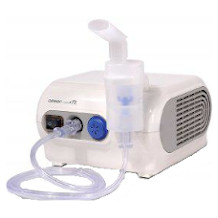
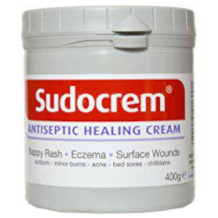
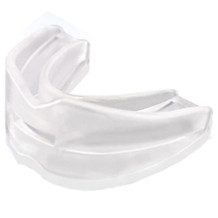
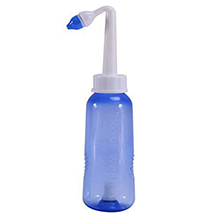
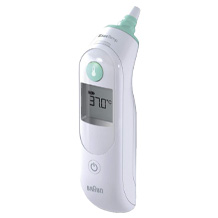
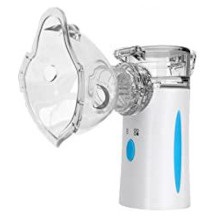
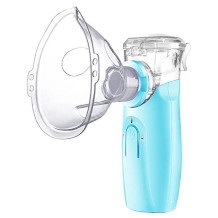

 237 reviews
237 reviews
